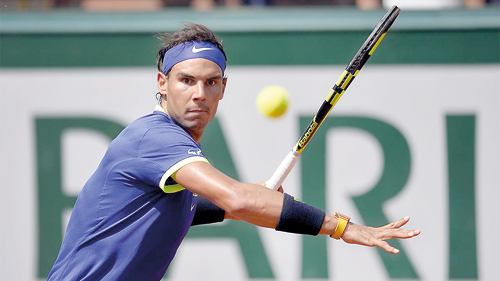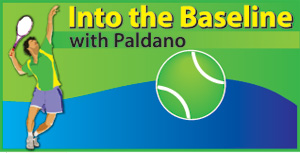Rogers-Cup sets the trend
 Wimbledon and the US-Open are the oldest Tennis events. Third is the Canadian-Open started in 1881, and popularly known as the Rogers-Cup. The 2018 event concluded last weekend. In recent times, it is played at 2 venues, Montreal and Toronto. In even numbered years, the Men play in Toronto and the Women in Montreal. It was so this year. Next year it will be other way around.
Wimbledon and the US-Open are the oldest Tennis events. Third is the Canadian-Open started in 1881, and popularly known as the Rogers-Cup. The 2018 event concluded last weekend. In recent times, it is played at 2 venues, Montreal and Toronto. In even numbered years, the Men play in Toronto and the Women in Montreal. It was so this year. Next year it will be other way around.
Modern Hard-Court Tennis
US-Series is on Hard Courts (HC), with both genders exhibiting their firepower. A good Serve extended its advantage even up to the 3rd or, sometimes 4th shot of the rally. HCs give more Service Aces to players than any other. This means, players will have to handle speed. The reduction in speed after the ball bounce on HC is minimal or, non-existent. Being so, any late sighting of the opponent’s shots will diminish the shot selection option of the player greatly.
Often, on HCs, matches turn tide unexpectedly, with such surprise that will make a clear winner into a loser. This is due to timing of shots having very little stroke-making error tolerance. Even the slightest change in physical efficiency or, emotional status of the player, has a telling effect to the timing of contact and perfection of contact, to transfer power with control. Very often good players abbreviate the stroke to accommodate this. There is loss of control in doing so. These are just a few among the many issues that makes match tide to change dramatically on HCs.
Physically punishing
surface
The salient issue on HCs is the telling strain it induces on the knees, hips and the lower back. HC means players are dancing on ‘Concrete’. What’s more, the surface has little or no lateral sliding tolerance. All strain ends up in the body joints. True, players are trained to accommodate this, even then, no player has taken the long term effects of it without injuring the body. Many well-known past players in both genders have had hip replacement surgery. Roger Federer did not play in this year’s Rogers-Cup to save himself for the US-Open.
Women’s in Montreal
The modern lighting system, the LED revolution, has changed the playing hours of the matches. Matches are being played regularly at midnight. This demands not only the accommodation of time zone change issue but also, accommodation of unproductive sleep patterns. Taking these and making them into a lifestyle is being questioned by professional bodies. They are lobbying beneath the surface for changes. On the other hand, event organisers have the responsibility to have their mega size stadiums full, as it looks good on TV and for the sponsors. A Catch 22.
In this year’s Women’s Rogers-Cup, World No.1 Simona Halep beat USA’s Sloane Stevens in the finals. It was an exceptional match. Both players, at home on HCs, did not spare any of their weaponry in their efforts to win the event. Unfortunately, the end of the season effects showed up, with the most amount of bandaged players on court.
Men’s side
In the US-Open series, spectator hype and their entertainment in the stadium has been taken to higher levels every year. It began in the US-Open sometime ago. The puritan Tennis of the Victorian era has been laid to rest in the American soil. This challenges players, having to play a serious match in the middle of a carnival ground. Tennis is not the only sport to face this challenge. In the US-Open-series it is the norm. Increasingly, Sports is becoming a mere ‘platform’. It used to be the ‘content’ in the arena.
Nadal won the Rogers-Cup in Toronto. More than a little shaky, but maintained his edge to win. The name that made it to be reckoned with is that of 20-year-old Greek, Stefanos Tsitsipas. The teenagers have the natural agility. He lost to Nadal in the finals. Other matches too kept audience interest glued to the match.
 Career and Retirement
Career and Retirement
The attraction for players to stay longer in the circuit is money. Its big, even from the 2nd Round in top end events. The sure money now is the prize money. Selling name and fame after one’s career doesn’t seem to be so lucrative as before. Something the professional bodies are unhappy about. Tennis too, like in modern business organisation, would like the average age among the energetic, to span from late teens to approaching 30s. They are more appealing to watch and better news material.
Today, in the professional circuit, the differences of players in skill, tactical play and in capacity, has become a thin line. Up to now this year, the field has been a battle between the prospective new names, injury-prone famous ones and second run players making a strong ascend into the Top 20. The year-long validity of the ranking points is keeping the Top 5 in place.
“Leave when on top”, is the advice any old hand will give. There are other options now — income before retirement.
George Paldano, Former int. player; Accredited Coach of German Federation; National coach Sri Lanka & Brunei, Davis-Cup, Federation Cup captain/coach– contact 94 77 544 8880 geodano2015@gmail.com –


